







£11.99 – £299.99 inc VAT


This website is secured:
✔ The UK’s Largest Range Of Mesh Products
✔ FREE UK Delivery Included
✔ Immediate Express Dispatch From Stock
✔ Tracked Delivery with Order Updates
✔ 30-Day Returns Accepted
£ Check Out Our Clearance Listing For Savings
@ ☏ Bespoke Sizes & Larger Sheets Available
This high-quality stainless steel wire gauze mesh features a fine weave with 0.308mm holes, made from 0.2mm wire in durable 304 grade stainless steel. The mesh’s fine specification makes the holes barely visible to the naked eye, ideal for any application requiring fine mesh. Its flexibility allows for easy handling, enabling you to bend and fold the gauze by hand.
With 50 holes per linear inch and a total of 2,500 per square inch, this mesh provides excellent filtration efficiency, making it suitable for use in the food, pharmaceutical, and chemical industries. The stainless steel construction offers exceptional durability and resistance to rust and corrosion. This fine gauze metal is especially effective in filtration and straining tasks, combining reliability with superior quality. The mesh can be easily cut with standard kitchen scissors or shaped with fingertips, enhancing its utility across various applications.
0.308mm hole stainless steel fine wire wire gauze mesh in top quality 304 grade made from 0.2mm wire. As you can see from the image, this is a fine mesh specification. The holes are very small and not especially visible by naked eye. It is of interest to anyone who needs a fine mesh for any application. You would be able to bend and fold this gauze by hand very easily.
Stainless steel is a sturdy and versatile material that has become a popular choice in various industrial and domestic applications due to its durability and resistance to rust and corrosion. One particular type of stainless steel that is in high demand is fine gauze metal, which has a 0.3mm hole and a 0.2mm wire. This type of metal excels in filtration and straining applications, making it ideal for use in the food, pharmaceutical, and chemical industries. With its 50 holes per linear inch, it allows for efficient and effective filtering without compromising on quality, making it a reliable choice for many industries.
The specifications of this woven wire mesh are as below:
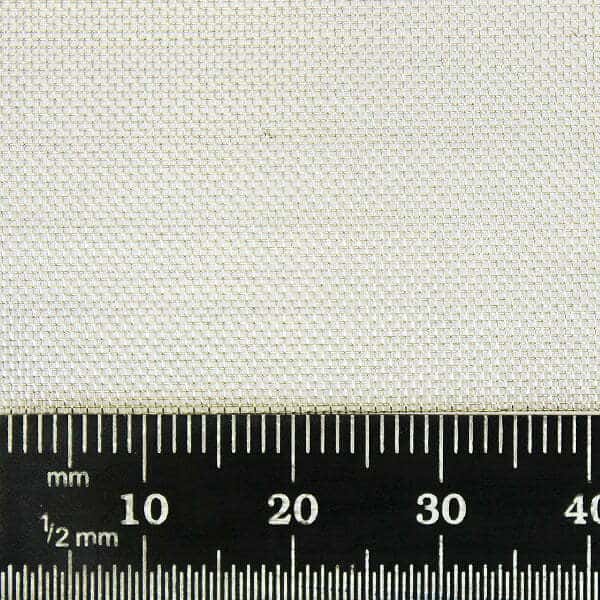
Wait!! Before you order your mesh please first check out our clearance listing which is where we put all of our over-run bargain rolls at reduced prices. You never know, you might find just the roll that you need for your purposes.
We also offer a massive range of 304 stainless steel perforated metal sheet options from immediate stock. In order to produce stainless steel perforated metal sheet, flat sheet metal is punched with round or square holes. Perforated sheets are commonly often used in applications where the passing of air is required. Because the holes are punched, it is possible to have a far stronger finished metal product than it would be for the equivalent thickness in woven or welded mesh.
Our group have been in the mesh industry for over 150 years. We are one of the UK’s most trusted mesh suppliers because:
The Mesh Company has an enormous range of woven gauze metal products. We truly are an industry leader among suppliers of weld mesh and woven wire materials. With the capabilities we have in-house, we can provide virtually anything you require.
Copper, brass, black, and galvanised steel wire mesh materials are also available in large stock quantities at bargain prices. See our blog for specific information on all of our various
0.3mm hole stainless woven wire gauze metal is manufactured through a process called weaving. Here are the steps involved in the manufacturing process:
It is quality checked before being accepted and stocked on our shelves.
Cutting woven gauze metal can be a delicate and challenging task. Here are some steps that you can follow to cut it:
If you cross over the gauze it may become sharp and impact the structure of the gauze.
304 stainless steel is an austenitic steel alloy that contains a minimum of 18% chromium and 8% nickel, which provides it with excellent corrosion resistance properties.
This makes it the most popular choice for many applications, including the manufacturing of fine gauze. 304 stainless steel fine gauze is highly resistant to rust and corrosion in most environments, even when exposed to saltwater or other corrosive substances. However, in certain conditions, such as prolonged exposure to highly acidic or alkaline substances or exposure to chloride, it may experience corrosion or pitting. To prevent rust, it is important to clean and maintain the gauze regularly and to use it in environments that are suitable for its corrosion resistance properties. If you require gauze metal to be used in a coastal area then we recommend 316 grade stainless steel.
Yes it is available in mild steel. This is a slightly lower cost option.
Check out our blog ‘everything that you need to know about woven filter mesh’ for more information on this product. Our goal for our blogs and help guides is to answer as many questions as possible to help to explain the possibilities of mesh to our customers. Contact our team today if you have any questions at all. We are always really keen to help in any way that we can.
You may also be interested in our blog about hardware cloth. This article explains the term in great detail.
We also offer similar products through our highly popular eBay store, check us out there too.
| Woven Mesh Sheet Size | 150 x 150mm x 2 Pack, A4 x 4 Pack (210 x 300mm x 4 Pack), 300 x 300mm (30 x 30cm) Sheet, A3 x 3 Pack (300 x 420mm x 3 Pack), 500 x 500mm (50 x 50cm) Sheet, A2 420 x 594mm (42 x 59.4cm) Sheet, A1 594 x 841mm (59.4 x 84.1cm) Sheet, 1000 x 500mm (100 x 50cm) Sheet, 1000 x 1000mm (100 x 100cm) Sheet, 5 Metre x 1000mm (1 Metre) Roll, 10 Metre x 1000mm (1 Metre) Roll |
|---|
In 2008 Locker Wire Weavers launched The Mesh Company to bring our enormous range of wire mesh products to the general public for the first time. Previously wire mesh was only available for trade customers.
We continue to extend our range, and now proudly offer many forms of mesh and metal products for the best possible prices. We specialise in woven wire mesh. As a group we work closely with architects and designers to develop ground-breaking new applications for our multifunctional range of materials. We also offer state of the art fabrication and engineering for projects of all sizes.
Strong ties with the Warrington community continue to be at the very core of our business. We are proud to invest in the training and developing our staff of all levels in line with the traditions set by Thomas Locker, who founded our group 150 years ago when he invented the electronic loom. We continue to bring ingenuity and strong ethics to our day to day business.
The Mesh Company continues Warrington’s historic role in the wire industry. For more than 140 years, our group has been a leader in the supply and manufacture of woven wire mesh and wire cloth. Having been founded in Warrington, UK in 1878, Locker mesh products still retain the quality craftsmanship and spirit of innovation that were so characteristic then.
Available Options
You will find full rolls of this insect netting here. Please be advised that the majority of woven mesh is usually available in a maximum roll size of 30 metres by 1200mm. Please email us if you wish to discuss purchasing this mesh in any size – sales@themeshcompany.com.
Feel free to call us if you wish to discuss any of our products – (+ 44) 01925 406 602. We are always happy to help in any way that we are able to.
We also offer this product through our highly popular eBay store, check us out there too.
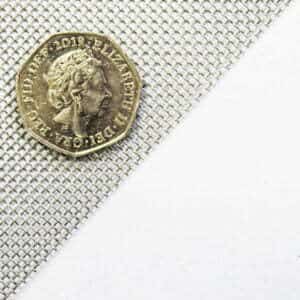
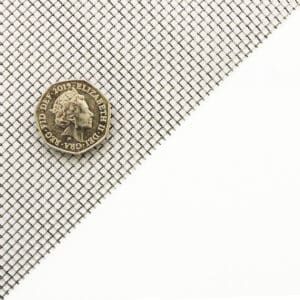
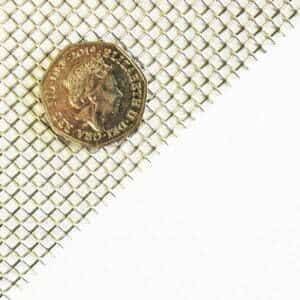
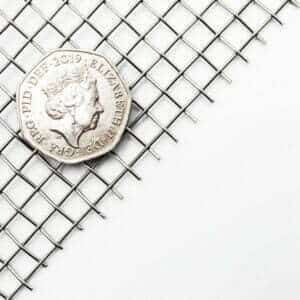
The largest range of wire mesh, chicken wire, wire fencing, woven wire mesh and perforated metal products in Europe, delivered direct from our Warrington warehouse.




Website by: Beech Web Services | Terms and Conditions | Cookie Policy | Privacy Policy | Website Terms and Conditions
Reviews
There are no reviews yet.